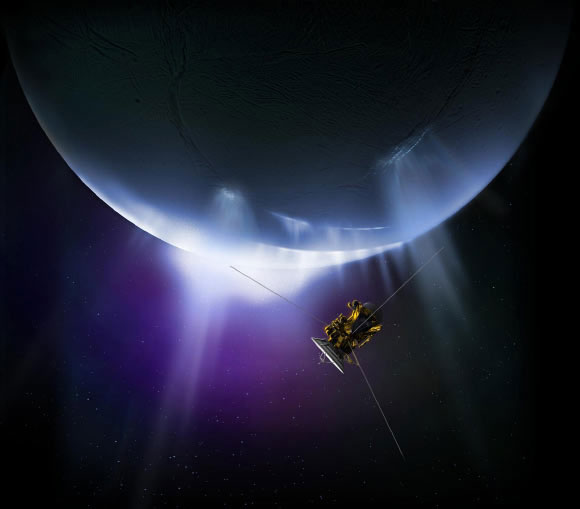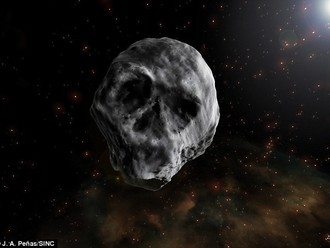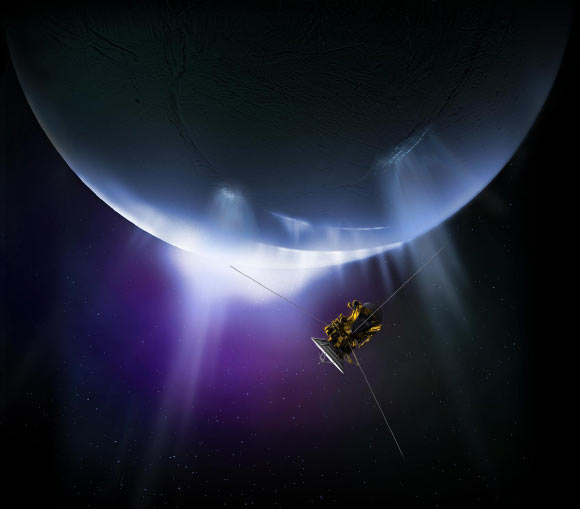US scientists have found an easier solution than sending robots to try to get into the ice crust of Saturn’s moon Enceladus to hunt for aliens.
A study just published in the Planetary Science Journal shows that just one orbiter with additional equipment is enough for NASA to gather solid evidence of the presence of aliens on Earth. “moon of life” Enceladus.
Enceladus, Saturn’s massive, icy moon, is one of those places where NASA is almost certain to be the promised land of aliens, following the quaking discovery of the Saturn probe Cassini in 2014.

Cassini and Enceladus spacecraft – (Image: NASA)
Cassini not only identified a large ocean below the icy surface of Enceladus and sampled water from eruptions through the ice crust, but also analyzed and identified the organic molecules that make up the basis of life. . The eruptions also ejected quite a bit of methane, which is one of the most reliable signs of life.
According to Sci-News, NASA has built a big plan for the next decade, which is to send a lander carrying mini robots to Enceladus, for the robot to go under the ice cover to find aliens.
But new research, led by planetary scientist Régis Ferrière from the University of Arizona (USA) – which regularly collaborates with NASA on missions – shows that just one orbiter is enough.

Orbiters are inexpensive, easy to implement, and will be many years sooner than planned for the lander and accompanying robotics. The new spacecraft will need to be equipped with more upgraded instruments than Cassini, but do the same job as Cassini of sampling the airflow, or can also land to sample directly but without carrying. robot.
The reason is that the excess methane that Cassini found is enough to evoke images of special ecosystems that exist in hydrothermal holes on the ocean floor – like the hydrothermal system on the seafloor in Hawaii or South America. The pole of the Earth, which is teeming with life despite darkness and high pressure.

The organisms that live there are mainly simple bacteria called methanogens, which provide their own energy even without sunlight.
Methanogens convert dihydrogen and CO2 for energy and release methane as a by-product. Therefore, further analysis of methane plumes from the underground ocean is sufficient to calculate the biosphere of Enceladus. In addition, these jets can carry extraterrestrial cells, which our job is to use more advanced analytical tools to capture.
It is the specific organic molecules that will be the evidence to confirm or disprove the belief of a rich biosphere on Enceladus that NASA has long nurtured.








